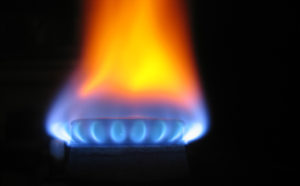 Natural gas rose for the first time in four days on Friday to reverse its weekly decline ahead of a cold Canadian pattern and on signs that nationwide stockpiles at the start of the heating season will trail last years levels.
Natural gas rose for the first time in four days on Friday to reverse its weekly decline ahead of a cold Canadian pattern and on signs that nationwide stockpiles at the start of the heating season will trail last years levels.
Natural gas futures for settlement in November rose by 2.72% on the New York Mercantile Exchange on Friday to settle the week 0.4% higher at $4.039 per million British thermal units. Prices ranged between a weekly low of $3.908, the lowest since September 25th, and Wednesdays three-month high of $4.184.
Natural gas was already in the red and slumped further on Thursday when the Energy Information Administration reported that US natural gas storage expanded by 112 billion cubic feet in the week ended September 26th, exceeding a projected gain in the range of 105-109 billion cubic feet. The build was the twenty-fourth straight bigger-than-average injection, and narrowed the deficit to the five-year average to 11.4%, down from 55% in March. At 3 100 bcf, nationwide inventories were 10.7% lower from last years 3 473 bcf during the comparable period. According to the government agency, supplies are anticipated to reach 3 477 billion cubic feet through the end of October.
Gene McGillian, an analyst and broker at Tradition Energy in Stamford, Connecticut, said for Bloomberg: “It’s pretty clear we will go into withdrawal season with more than 5 percent less gas in storage than last year. The closer we get to the start of winter the more the market has a good chance to strengthen on the fears of what occurred in last year’s winter.”
US weather
While next week’s build will be quite bigger than average, the following reports will post leaner figures, as cooler weather makes due through the northern US. A set of cooler Canadian systems will be tracking in quick succession through the third week of October, with each tapping progressively more of the very cold, Arctic air over northern Canada. While its too early to call winter, the pattern will provide significant upward pressure on natural gas prices.
“Additional weather systems should follow through the third week of October, while likely getting progressively colder and more intimidating,” analysts at NatGasWeather.com wrote on Friday. ”We need to keep watching intently to see when these cool blasts turn into cold outbreaks, as we aren’t far off.”
According to AccuWeather.com, the low in New York on October 8th will be 53 degrees Fahrenheit, 1 above average, and will hold in the range of 50-60 degrees through October 20th, compared to seasonal levels of 49-50 degrees. Chicago will enjoy a mostly sunny week. The low on October 8th will be 51 degrees, 3 above normal, before dropping to 43 degrees on October 17th, 2 below usual.
Down South, Houston will see mostly sunny weather in the next few weeks. Highs will reach 87-89 degrees between October 7th and October 10th, compared to the average of 83, before easing to 82 degrees through October 13th and further dropping to 71 degrees two days later. Lows will fall to 54-60 degrees between October 14th and October 19th, below the average of 63-64.
On the West Coast, Los Angeles will see highs of above 80 degrees through the middle of the month. Readings will peak at 87 degrees on Tuesday, 7 above the average, before dropping to the seasonal upper 70s between October 17th and October 21st. At 58-63 degrees, lows will mostly match or slightly exceed average levels.
Pivot points
According to Binary Tribune’s daily analysis for Monday, November natural gas futures’ central pivot point stands at $4.010. In case the contract penetrates the first resistance level at $4.076 per million British thermal units, it will encounter next resistance at $4.112. If breached, upside movement will probably attempt to advance to $4.178 per mBtu.
If the energy source drops below its first support level at $3.974 per mBtu, it will next see support at $3.908. If the second key support zone is breached, the power-station fuel’s downward movement may extend to $3.872 per mBtu.
In weekly terms, the central pivot point is at $4.044. The three key resistance levels are as follows: R1 – $4.179, R2 – $4.320, R3 – $4.455. The three key support levels are: S1 – $3.903, S2 – $3.768, S3 – $3.627.





